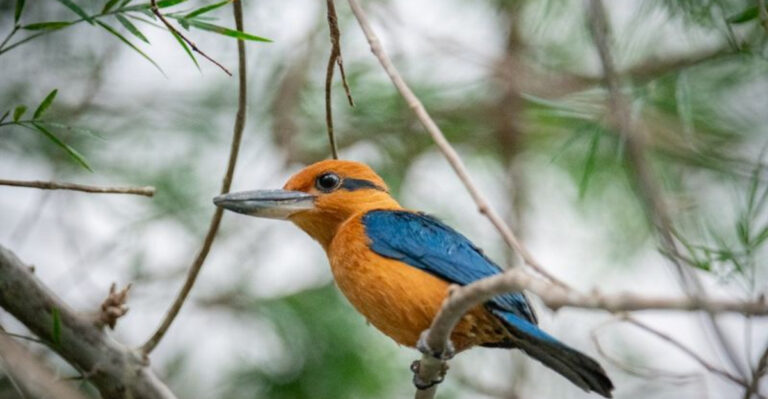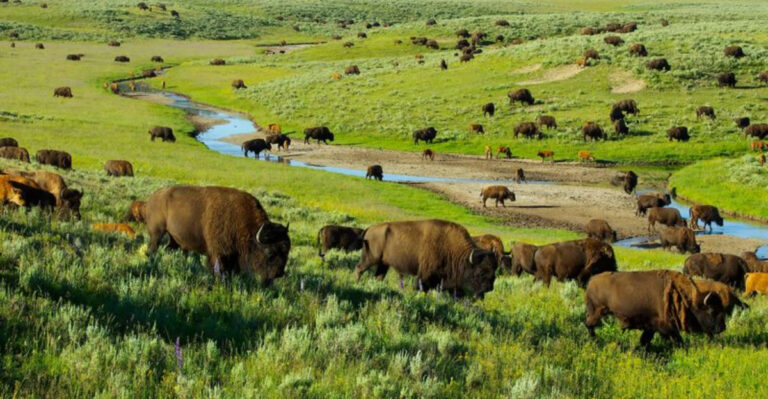10 Snakes To Look Out For In Arizona This Summer
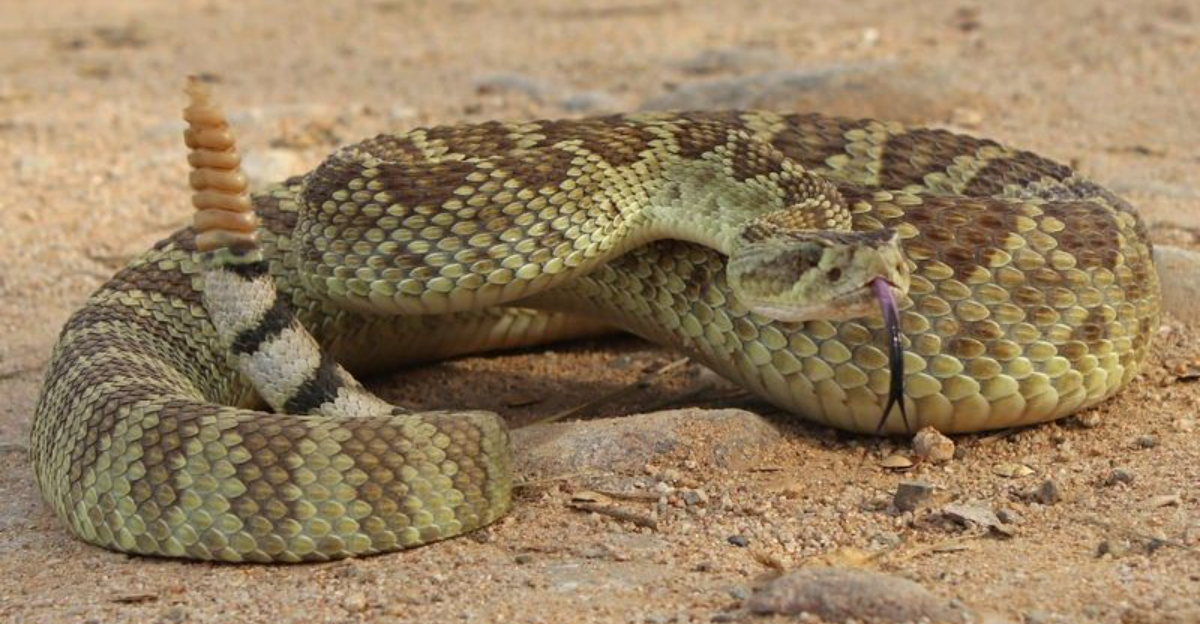
Summer in Arizona brings out more than just scorching temperatures – it awakens the desert’s slithering residents too. With over 50 snake species calling Arizona home, knowing which ones pose a threat could save your life during outdoor adventures.
Whether hiking trails or relaxing in your backyard, being snake-aware is essential for anyone enjoying the Grand Canyon State this summer.
1. Western Diamondback Rattlesnake
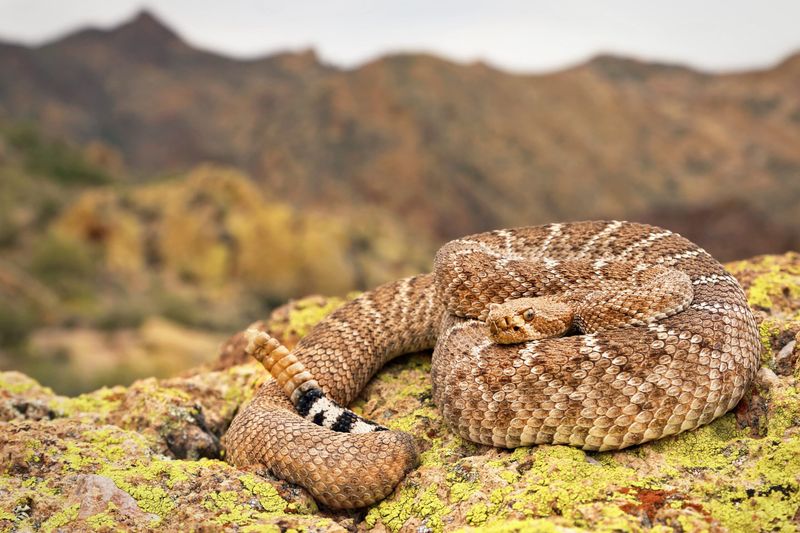
The notorious diamond-patterned assassin of the desert ranks as Arizona’s deadliest snake. Responsible for more bites than any other rattlesnake species, these hefty predators can grow up to 7 feet long. Their distinctive warning rattle sounds like maracas shaking frantically when threatened.
Found throughout the state, diamondbacks prefer rocky outcrops and desert scrubland where they ambush prey. Their venom contains tissue-destroying toxins that require immediate medical attention.
Keep your distance if you spot the telltale diamond patterns along their back and the black-and-white banded tail.
2. Mojave Rattlesnake
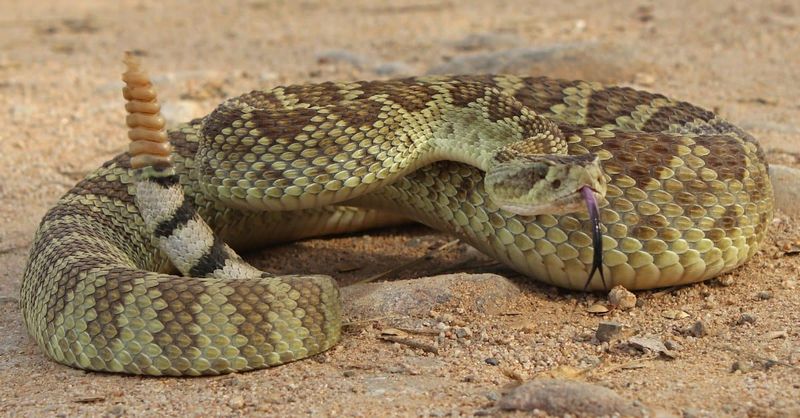
Often called the ‘Mojave Green,’ this rattler packs the most potent venom of any North American snake. Unlike its cousins, its neurotoxic venom attacks the nervous system, potentially causing respiratory failure.
Identifying them can be tricky – they look similar to diamondbacks but with a greenish tint and distinctive white spaces between tail bands. They inhabit low desert regions in western and southern Arizona.
Hikers beware: Mojave rattlesnakes strike with little provocation and can deliver venom in over 80% of bites. Their venom works differently than other rattlesnakes, making them especially dangerous.
3. Sonoran Coral Snake
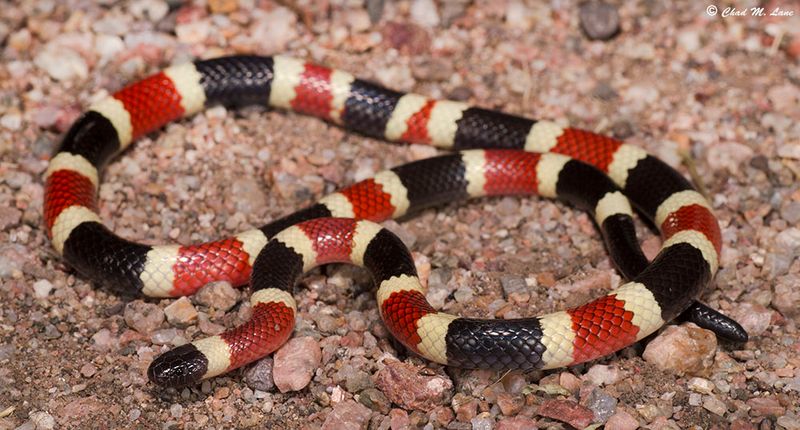
Vibrant red, yellow, and black bands make this snake look like a living piece of jewelry – but don’t be fooled by its beauty. Remember the rhyme: “Red touch yellow, kill a fellow” to distinguish this venomous species from harmless mimics.
Unlike rattlesnakes, coral snakes lack heat-sensing pits and rattles. They’re shy creatures, typically active at dawn and dusk in desert washes and rocky areas of southern Arizona.
Their small mouths and short fangs make bites rare. When they do bite, however, their potent neurotoxic venom requires specialized antivenom. Thankfully, they’re typically non-aggressive unless handled or stepped on.
4. Tiger Rattlesnake
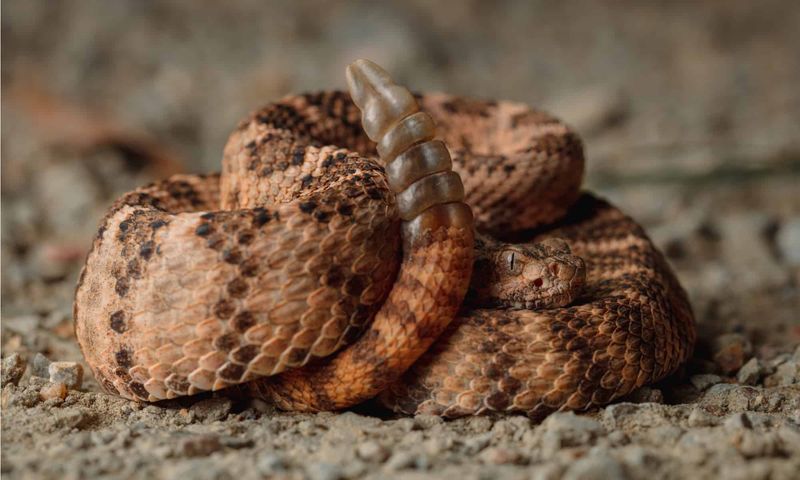
Named for its distinct crossband pattern resembling tiger stripes, this compact rattler compensates for its small size with extraordinarily potent venom. Gram for gram, tiger rattlesnake venom ranks among the most toxic of any rattlesnake in the Americas.
Fortunately, they deliver smaller venom amounts than larger species. These snakes prefer rocky hillsides and canyons in central and southern Arizona, particularly around Tucson. Their stubby bodies rarely exceed three feet in length.
Tiger rattlesnakes are generally calm unless cornered. Their distinct narrow head and tightly spaced crossbands make them recognizable to careful observers exploring rocky terrain.
5. Black-tailed Rattlesnake
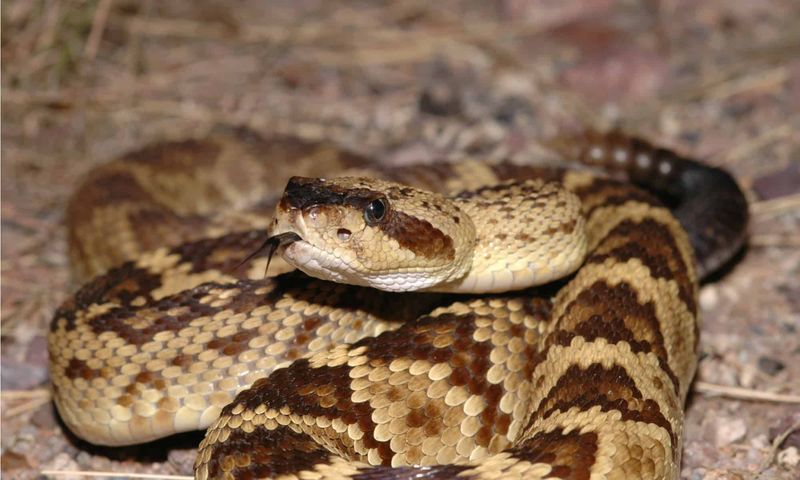
Mountain hikers should watch for this handsome rattler with its jet-black tail section that contrasts sharply with its tan or olive body. These medium-sized snakes prefer higher elevations, making them common encounters on popular hiking trails around Flagstaff and Sedona.
Their excellent camouflage against pine needles and forest floors makes them easy to miss until you’re dangerously close. Black-tails are relatively calm compared to other rattlesnakes but will defend themselves when threatened.
They’re most active during summer mornings and evenings when temperatures are moderate. Listen for their distinctive buzz when hiking – they’ll usually warn before striking.
6. Arizona Black Rattlesnake
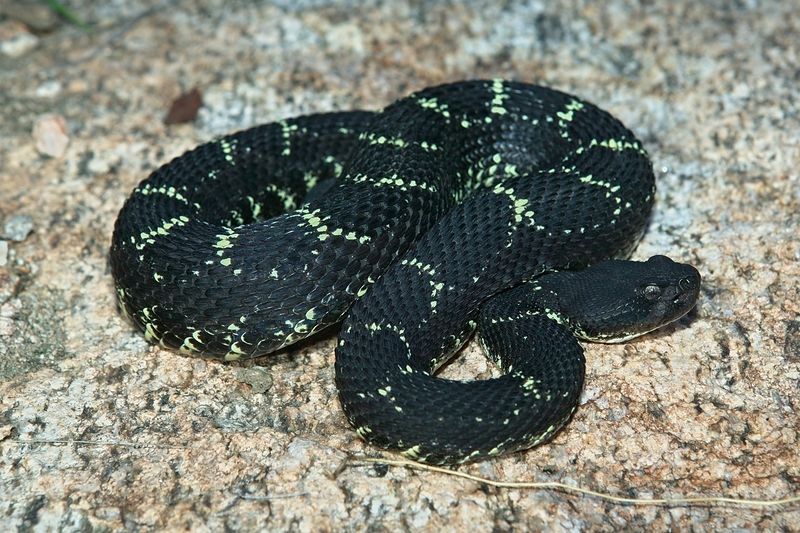
Masters of mountain living, these dark-colored rattlers are found exclusively in Arizona’s higher elevations. Young snakes display distinct patterns that fade as they mature into a rich charcoal or olive-black coloration.
Campers in the Mogollon Rim and White Mountains frequently encounter these snakes during summer months. They’re particularly active after summer rains when hunting for rodents and lizards in pine forests and rocky outcrops. Their dark coloration helps them absorb heat in cooler mountain environments.
Though their venom is less potent than desert species, their remote habitat often means medical help is farther away, making any bite potentially more dangerous.
7. Sidewinder Rattlesnake
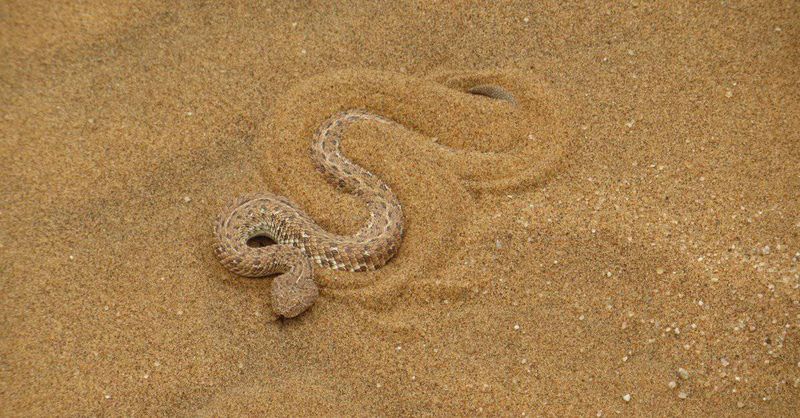
Famous for their unique sideways locomotion that leaves J-shaped tracks in the sand, sidewinders have evolved specialized adaptations for desert life. Their distinctive raised hornlike scales above each eye provide shade and keep sand out during burrowing.
Small but mighty, these rattlers rarely exceed 2 feet in length. They’re primarily found in western Arizona’s sandy desert regions. Sidewinders are masters of ambush, partially burying themselves and leaving only eyes and rattle exposed. Summer nights bring them out hunting for lizards and small rodents.
Their sidewinding movement minimizes contact with scorching sand while maximizing speed – they can travel surprisingly fast when motivated!
8. Speckled Rattlesnake
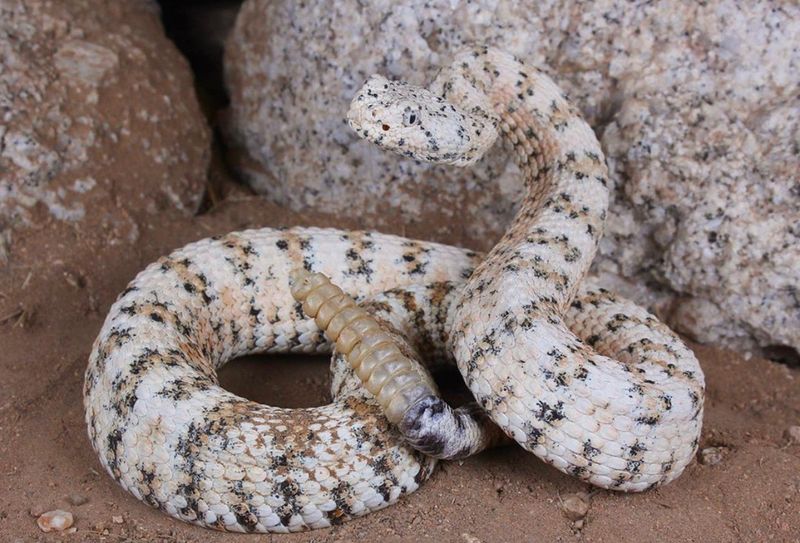
Nature’s masters of camouflage, speckled rattlesnakes match their body color to local rocks with uncanny precision. Populations in red rock areas develop reddish hues, while those in volcanic regions turn nearly black – perfect adaptation for ambush predators.
These medium-sized rattlers prefer rocky hillsides and outcrops throughout Arizona. Rock climbers and hikers frequently encounter them sunning on ledges or hidden in crevices. Listen for their high-pitched, buzzy rattle that sounds different from other species.
Speckled rattlesnakes tend to be more defensive than aggressive, but their exceptional camouflage makes accidental encounters common during summer hiking adventures.
9. Gopher Snake
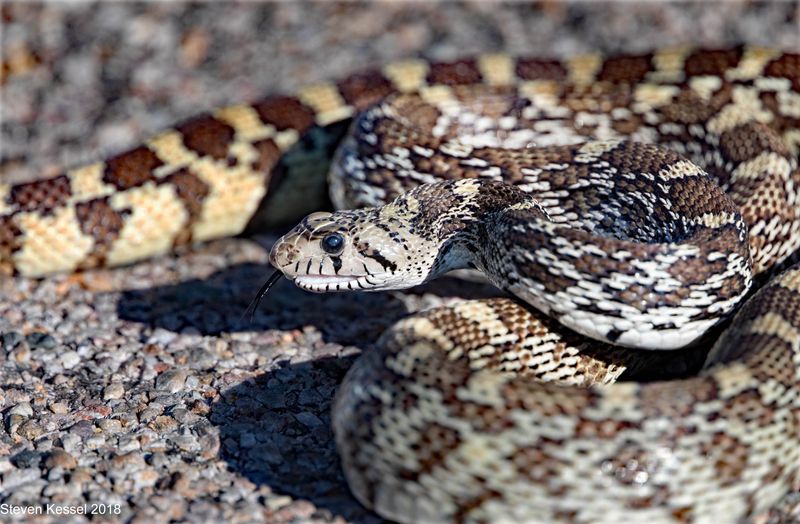
A case of mistaken identity makes this harmless snake a frequent victim of unnecessary killing. Gopher snakes mimic rattlesnakes when threatened – flattening their heads, hissing loudly, and even vibrating their tails against dry leaves to create a rattling sound.
Despite this convincing act, they’re actually beneficial predators that control rodent populations. Reaching up to 7 feet long, they’re one of Arizona’s largest snakes, found statewide in various habitats.
You can identify them by their pointed tails (no rattle), narrower heads, and black-and-white checkerboard pattern on their bellies. Their blotched pattern resembles rattlesnakes but with more distinct separation between markings.
10. Lyre Snake
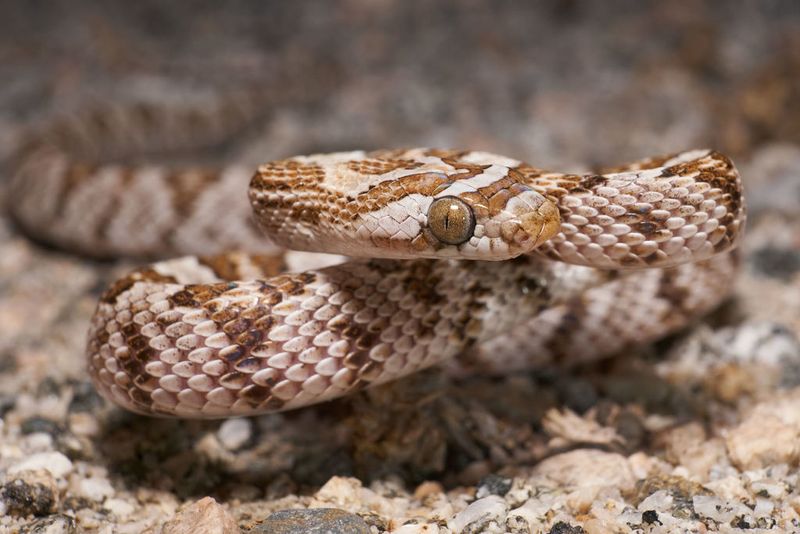
Rarely seen but fascinating, the lyre snake is Arizona’s only rear-fanged venomous colubrid. Named for the lyre-shaped marking on its head, these nocturnal hunters possess mild venom delivered through enlarged rear teeth rather than hollow fangs.
Their venom poses little threat to humans but helps subdue lizards and small mammals. Rock climbers occasionally encounter them in crevices of canyon walls and rocky slopes throughout central and southern Arizona.
With cat-like vertical pupils (unlike rattlesnakes’ elliptical pupils) and smooth scales, these slender snakes are excellent climbers. Their secretive nature and primarily nocturnal habits make summer evening encounters possible but uncommon.


